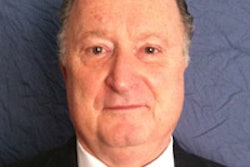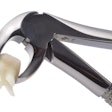
"The louder he talked of his honor, the faster we counted our spoons."
— Ralph Waldo Emerson
Let's be clear. No one is shouting to stop the solo practice business model, a monopolist delivery system restricting both labor and ownership to only a state-licensed dentist. In contrast, everyone from solo practitioners, the ADA, and government committees and subcommittees wishes to tear down the dental practice management (DPM) or the dental support organization (DSO) business model. The reason given is for the benefit of the patient.
The reason is backed up by allegation, unproved in general and fallacious, owing to a sampling of only a few disreputable operators identified not as scofflaws, but as clear-cut representatives of a flawed and unethical business model.
 Thomas Climo, PhD, is a dental practice management consultant and a past professor of economics in England.
Thomas Climo, PhD, is a dental practice management consultant and a past professor of economics in England.
Of course, for this reasoning to be true, then no state-licensed solo practitioner would ever have his or her license sanctioned, for, if one or more have their licenses under review and taken away by a state dental board, then, according to the same fallacious reasoning, this would provide grounds for an argument of a flawed and unethical solo practice business model as well.
I know of no monopoly that has ever willingly given up its claim to the pricing and policies of the revenues it controls. The strategy is usually to say the monopoly is in the best interest of the customer, and a breakup would mean worse service and cracks in a system that is perfect. No mention is ever made of the monopoly assisting the monopolist in dictating pricing and policies and also creating an entry barrier that foils healthy competition, which would benefit the customer. It took eight years to break up Bell and AT&T from 1974 to 1982. Can you imagine what the price of a long-distance call would be today if this breakup never happened?
The monopoly of the solo practice that has directed pricing and policy matters in the dental industry since the beginning of time has managed to deflect attention away from itself and its monopoly into an attack on an alternative and more competitive business model without realizing that solo practitioners themselves could and do benefit from use of this alternative business model.
That's right: This article is not about large group DPM/DSO companies financed by even larger group private equity funds; it is about the lone or partnership owners of multifacility dental practices, and when and why it makes sense for them to shift from a solo practice to a DPM/DSO business model. This tack is necessary because a business model is independent of the entity choosing to use it, a mistake in combat in the ongoing war between those employing the solo practice model and those employing the DPM/DSO model. Somehow this war is being showcased as between a David (the solo practitioner) and this Goliath (large group DPM/DSOs financed with private equity) by mistakenly throwing into the battle a business model preferred by Goliath. Not only is the showcasing misdirected at the model, but it is the first time in history when the monopolist considers himself a David.
“The way to profit has never been greed
or bad service, nor will it ever be.”
If you have one, two, or three dental practices, stay a solo practitioner, as economies of scale and centralization of management would be too costly to show operational benefit. However, the moment you launch your fourth practice, these costs are effectively spread and begin to translate into bottom-line results. The last thing in the world I would expect from the same dentist or same dental partnership in moving from one model to the other is a decline, much less an intended decline, in the service given to their customers, the dental patients. Yet, repeatedly, we are being told that the connection between a DPO/DSO model and bad dentistry is a 1:1 correlation that would never happen had the practice stayed a solo practice business.
Bunk!
Who would compromise service to their customers in the mistaken belief that in doing so the bottom line would improve? That would be like Hershey taking away its chocolate and expecting people to still buy it as a chocolate bar. The moment your business, whether solo practice or DPM/DSO, begins to deliver a bad product or bad service, the days are not long before loss replaces profit, closure replaces opening, and the falloff in patient base, the foundation of a practice's goodwill, is fast at hand. The way to profit has never been greed or bad service, nor will it ever be. Greed is a fiction of the lobbying of solo practitioners against a model they ought to be examining the moment they hold more than three practices.
Let's explain why.
Contrast a four-practice solo practice distribution of income with a four-practice DPM/DSO, as depicted in the two bar charts below; one running each office as if it were four separate entities and one running all four offices as one entity. (A number of line item costs are not named in the chart. Blue lines represent percentage of total sales.)
Solo practitioner with no centralization or economies

DPM/DSO solo practitioner with centralization and economies

With three times the earnings before interest, taxes, depreciation, and amortization (EBITDA) and nine times the net income, managing the four practices as one entity instead of four makes sense. Having an office manager for every other practice instead of each practice makes sense. Executing accounting and billing in-house instead of paying outside firms charging a monthly fee also makes sense.
I am sure no solo practitioner would grow four practices out in a manner illustrated by the first bar chart. In this event, you have shifted business models and are engaged in the exercise of separating clinic from nonclinic duties just like that recommended by the DPM/DSO business model. In other words, you have forsaken the solo practice business model in favor of the DPM/DSO approach. It would then be an obvious next step to trade on the efficiencies you have created by seeking and selling your practice to the highest bidder, one that fully appreciates what it is you have done in the sake of blending clinic decisions with nonclinic management. Forming a DPM/DSO for your exit is a smart move, just as it was as smart move to abandon the solo practice model when arriving at four or more dental practices in your portfolio.
The pie chart below -- employed in a prior DrBicupid.com article of mine, "How to put a price tag on your dental laboratory?" -- clearly shows the attraction to a dentist of opening up bids to buy his or her practice to a private equity market whose funding capabilities swamp that of the dental industry. In the prior article, the chart was used to point this fact out to the dental lab market, but it also holds for retail dentistry. A total of 150,000 practicing dentists with their combined fundraising capabilities are no match for the availability of funds to be found in the capital market. Capital markets price better, pay better, and give more bang for the buck of a solo practitioner having toiled to run a successful business for the last 20 or so years. The hard-working solo practitioner who has been operating multifacilities for all those years is deserving of this better price. How these multifacility dentists get snookered into favoring an argument (against DPM/DSOs) benefiting those dentists without access to capital markets is a marvel of lobbying know-how.
Availability of funds

So, the next time those of you having four or more dental practices chime in with your one-practice colleague against DPM/DSOs, you might want to examine whether your business is really using a solo practice model. I bet you aren't. Welcome to the world of the separation of clinic with nonclinic and the suitable management of the first by licensed dental personnel, and the second by savvy experienced management personnel.
As we say in economics, by shifting your business model, you have rightly shifted your opportunity curve upward and to the right -- more dollars for each unit of treatment. Once this has been achieved, who would ever want to go back to the reduced returns -- downward and to the left/less dollar for each unit of treatment -- of the solo practice model?
Thomas Climo, PhD, is a professor emeritus of accounting and finance at a major university in the U.K. He has published extensively about the importance of modern managerial and financial decision-making for dentistry. He is a consultant to corporate and solo practitioner dental practice management companies in the states of Arizona, California, Connecticut, Nevada, New Hampshire, New York, and Massachusetts. He can be reached by email at [email protected] or by telephone at 702-578-2757.
The comments and observations expressed herein do not necessarily reflect the opinions of DrBicuspid.com, nor should they be construed as an endorsement or admonishment of any particular idea, vendor, or organization.



















